December 1, 2021
What’s the Trick for Poinsettia Success?
Whatever the season, cut flowers are such a mood lifter. We can keep the indoor glow going for months, though, with easy-care poinsettias as houseplants and patio plants in temperate weather.
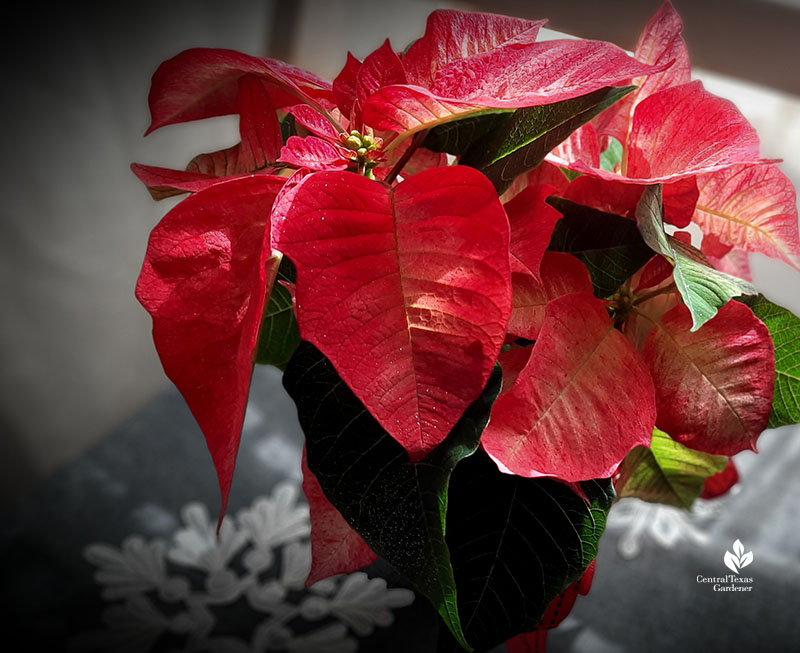
At the Arnosky Family Farms in Blanco, Pamela and Frank Arnosky fill greenhouses with hundreds of poinsettia starts every year. By late November, they’re dazzling us with a splendid “crop” of glorious color on generous bracts (modified leaves). Poinsettia’s flowers are actually the tiny yellow “dots” in the center.
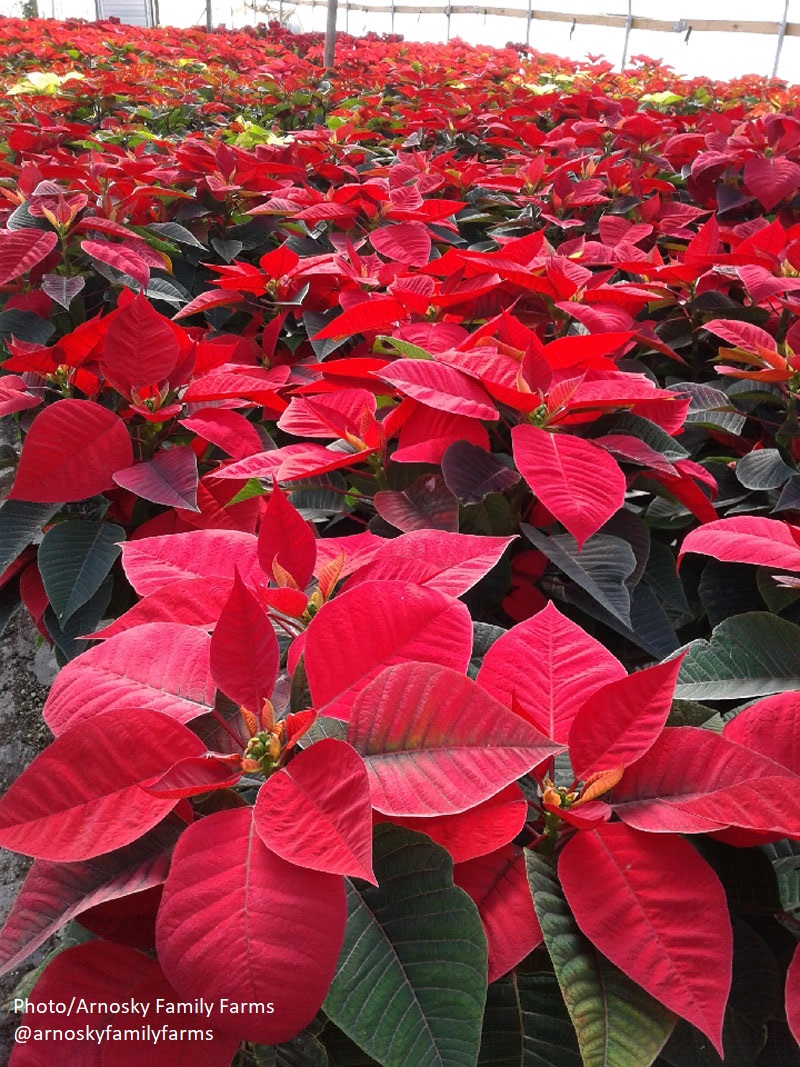
Sure, they’ve got the traditional red, like this Superba™.
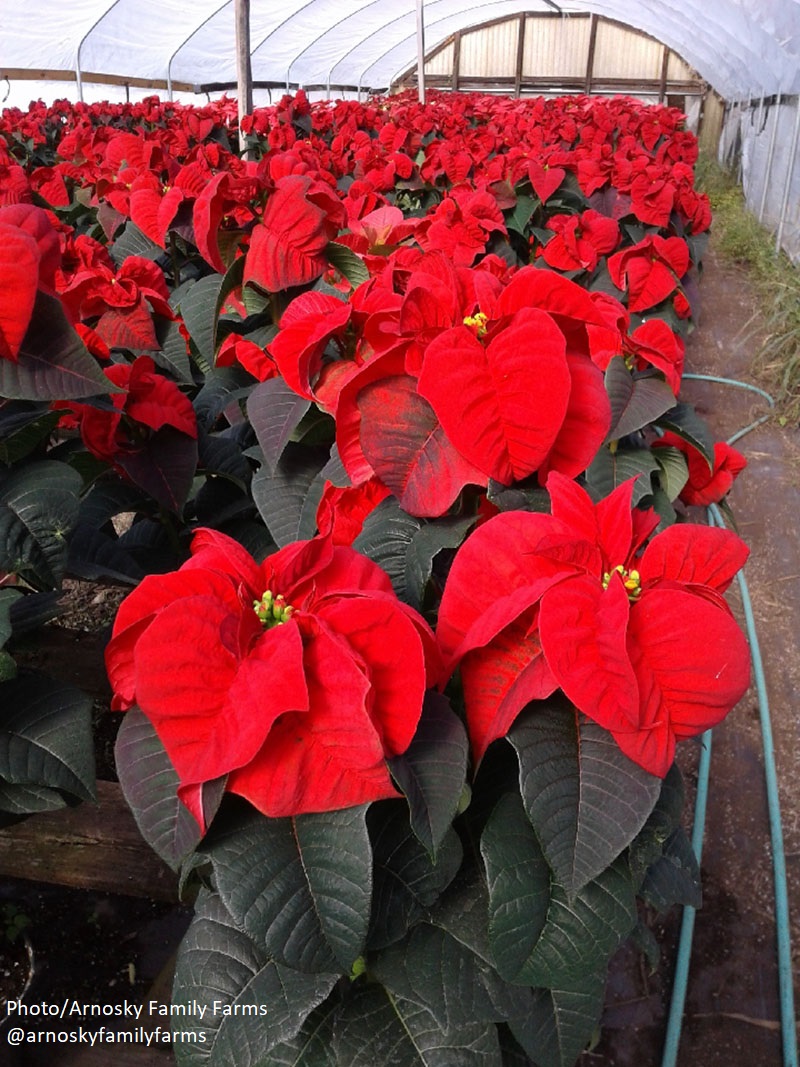
Add a little splash with Superba New Glitter™.

Imagine ‘Orange Glow’ against cozy lamplight on a wintry evening.
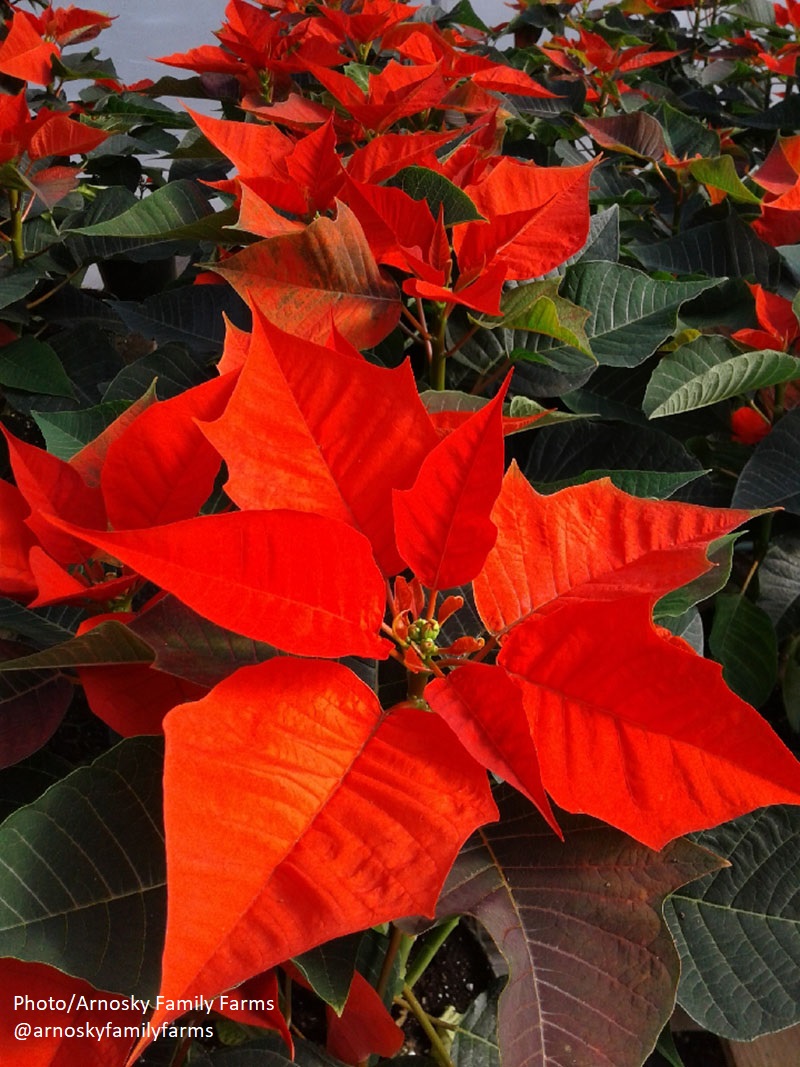
So, how do we keep poinsettias happy? “DO NOT put ice in the pots to ‘water’ them,” the Arnoskys advise. “These are subtropical natives and chilled roots cannot take up water. In fact, the cold can kill the roots. They do fine out of doors on warm, sunny, still days, with temps above 60 degrees. They are actually incredibly resilient during the Christmas season, and can take about anything you dish out except overwatering.”
Remember, poinsettias are euphorbias (Euphorbia pulcherrima)—succulent plants. I like to remove the pot from decorative wrapping and plop it into a basket or other container. When the soil is dry the first few inches, I pull the pot out and drench it in the sink, letting it drain well. (Or remove it from its wrapper for a sink drench.) Generally, we only need to water every few weeks or even longer. Can’t get easier than that, right?
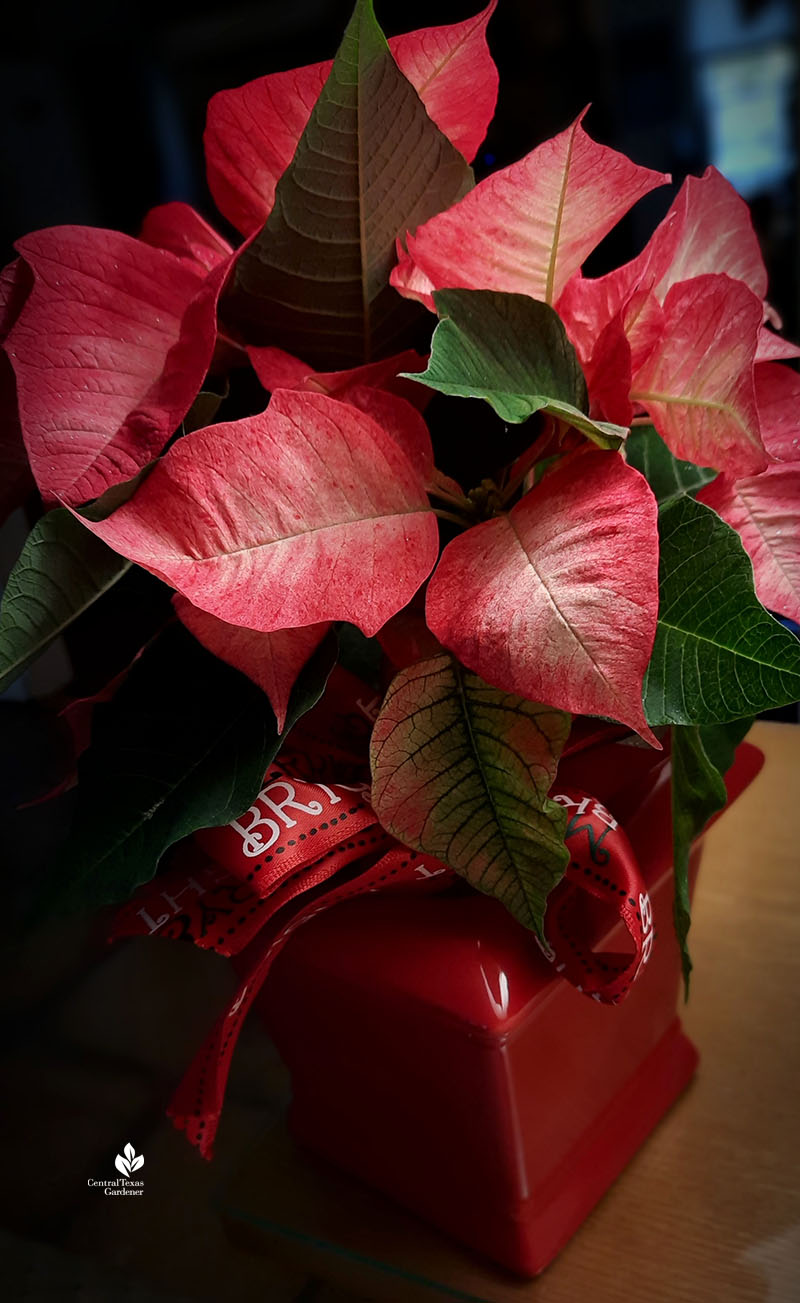
And hey, there’s no reason to trash them after the holidays! To keep stunners like ‘Picasso’ going after the season, “Keep in a bright, warm place. Prune back about half the size and treat like a houseplant. When weather warms in spring, repot and put outside,” the Arnoskys said.
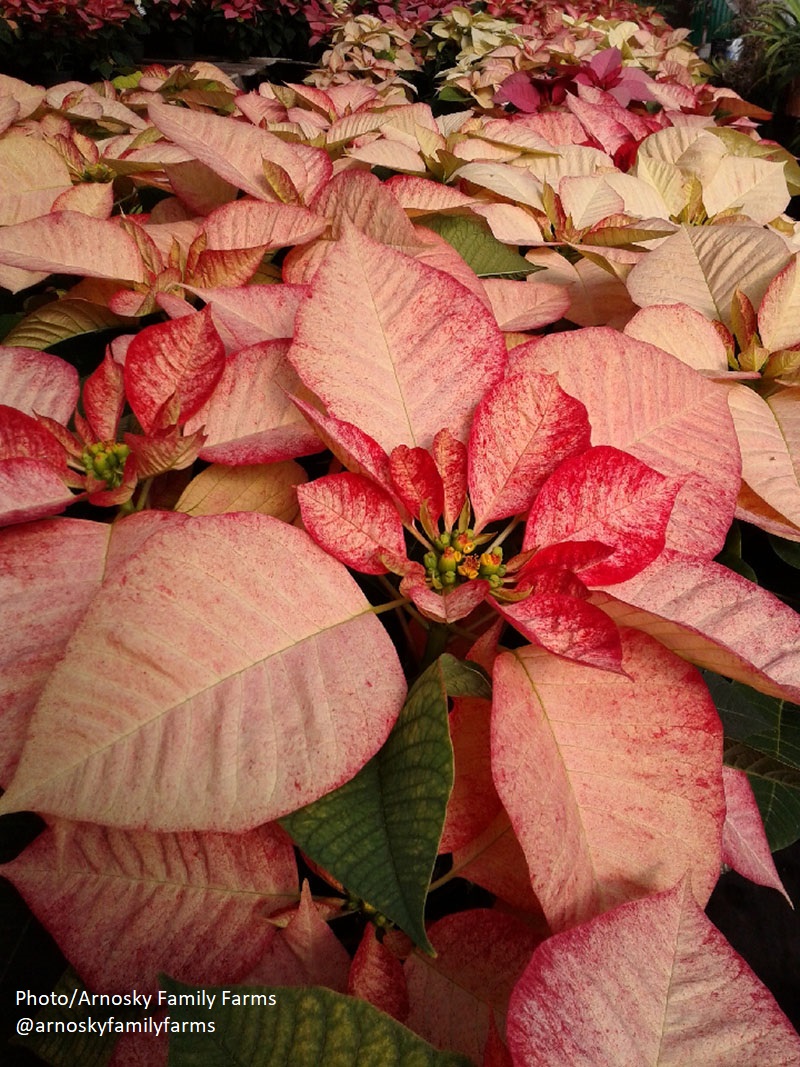
In fact, CTG viewer Adele Harmon kept hers going until the next Christmas.
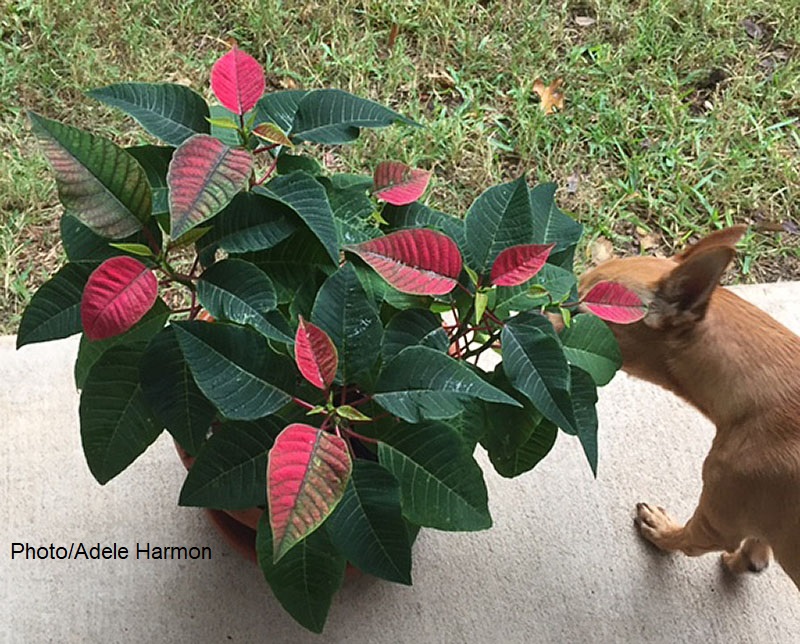
“My plants survive on neglect. I had the poinsettia in a shaded bed and watered when I remembered to turn on the sprinklers or we got rain. No skills involved,” Adele said. Her biggest challenge, she admitted, was getting her cute dog Magnolia to hang tight for this picture!
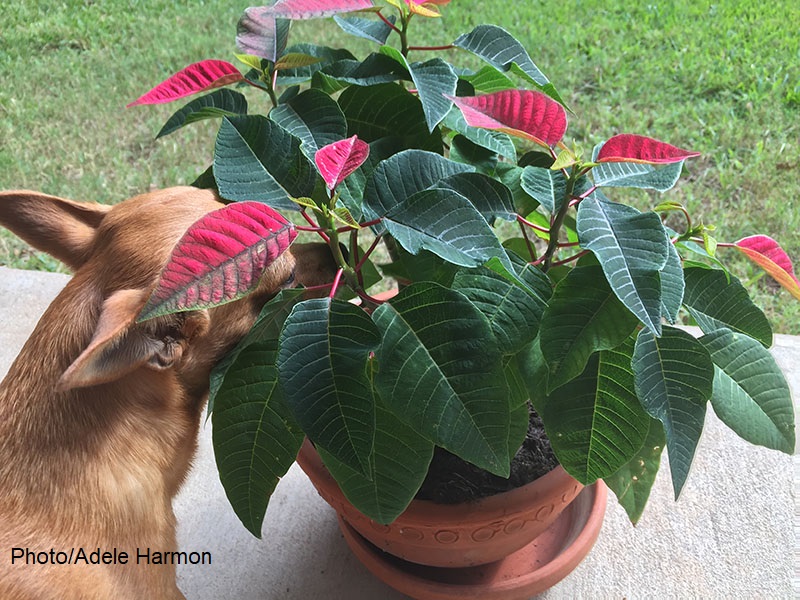
You can find the Arnosky’s Texas Specialty Cut Flowers at Central Market. Visit them in Blanco every day from 9 a.m. – 5 p.m. in the self-serve Blue Barn. And check out all their events! This Saturday, December 4, head out to their Holiday Open House at the Blue Barn from 10 a.m. – 2 p.m. for poinsettias, fresh cut lilies, plants, holiday refreshments and much more! Follow on Instagram for the latest news and floral temptations.
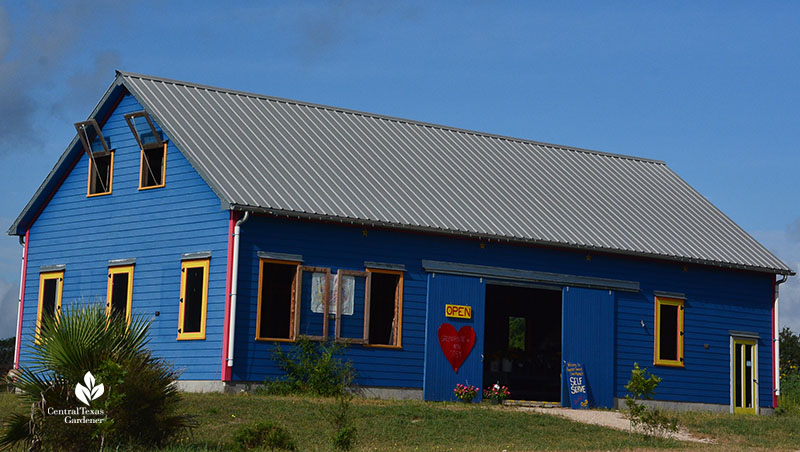
Watch our story with Pamela and Frank to learn how they grow winter flowers, including larkspur, nigella, and Orlaya grandiflora to cheer your days and feed pollinators like native bees.
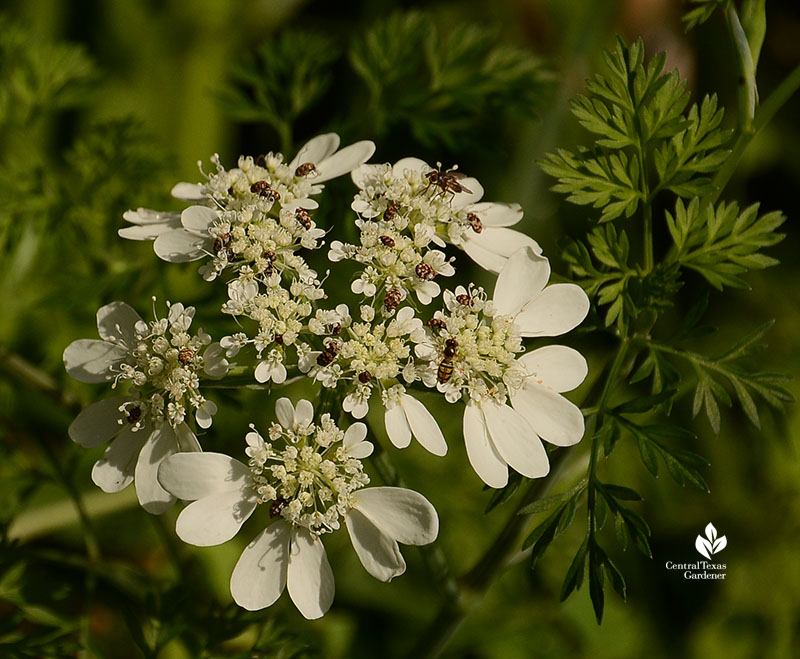
So, can we plant them outside in late spring’s warmth? Well, CTG viewer Jay Musfeldt in Leander sure did one year.
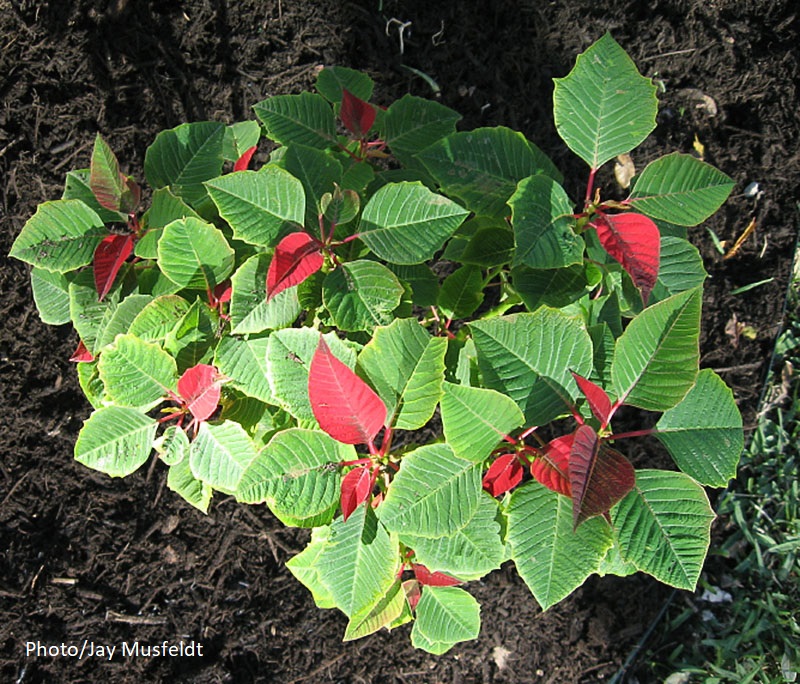
When he and his family lived in Oregon, he pruned his Christmas poinsettias and kept them in a north window in his office. “They would grow into beautiful houseplants and would often bloom in that spot. I also transplanted them into the garden where they made attractive shrubs,” he said.
When they moved to Leander, where our soil and climate were quite a shock, he fearlessly jumped into this garden challenge, generously crediting CTG for guiding the new pathway. He taught us, too, by documenting his poinsettia adventure.
In Leander, their poinsettias bloomed in the house from November to Easter. Then, he decided to plant the two hardiest along the margin of a perennial bed under a large live oak. “They probably get shade 50% of the time both summer and fall. We sprinkle 10 minutes twice a week during summer,” he journaled.
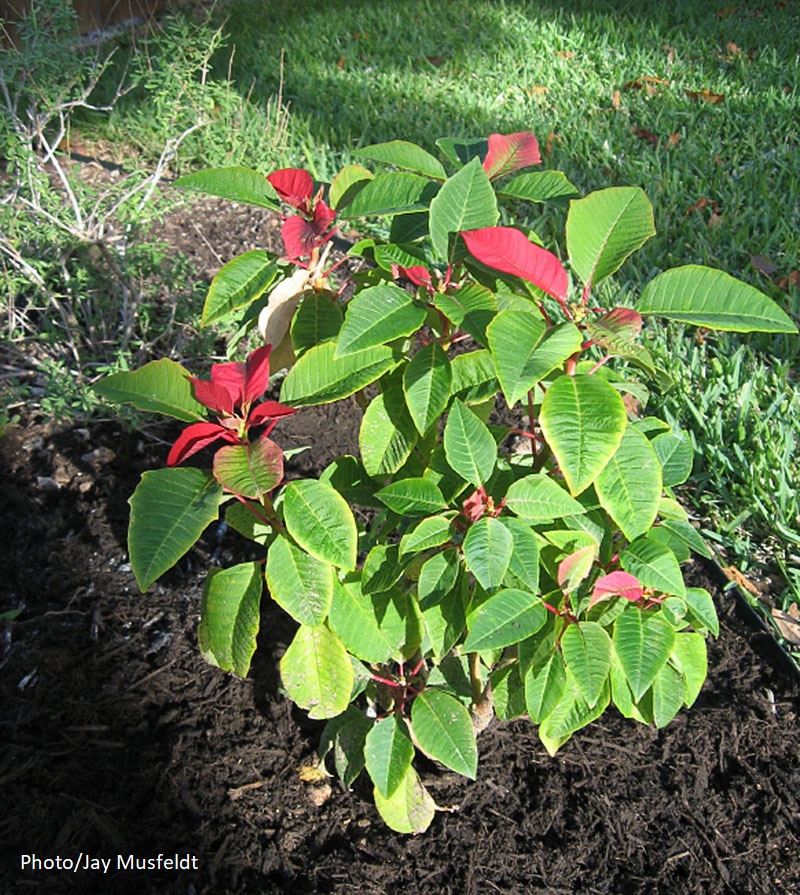
That fall, he wrote: “Not only did they withstand our brutal summer, but both plants are now beginning to bloom. The plants are about 18″ tall. The flowers and leaves are smaller than the greenhouse plants you buy in the store, but they’re a delight to me. I’ve never had poinsettias bloom outside before. Needless to say, I’m protecting them like newborn babes on these cool mornings.”
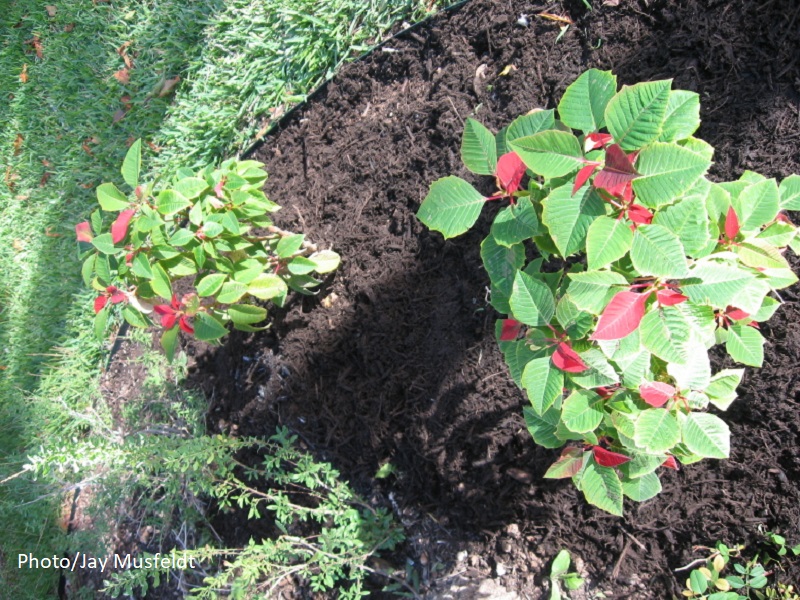
BIG NOTE: These poinsettias (Euphorbia pulcherrima) are native to Mexico and Central America, and can’t withstand temperatures below 50°. So, if you plant them in the ground, consider them an annual, or bring their containers back inside in fall.
We do have a native, wild poinsettia (Euphorbia cyathophora) that is cold hardy for us. Known as “fire on the mountain,” Daphne told us that this small, spreading annual generally grows to about 18 to 24 inches tall. In the Wildflower Center’s demonstration garden, it companions with native gaura. Sometimes you can find it in local nurseries or perhaps at Wildflower Center sales. This one colors up from late spring to first frost.
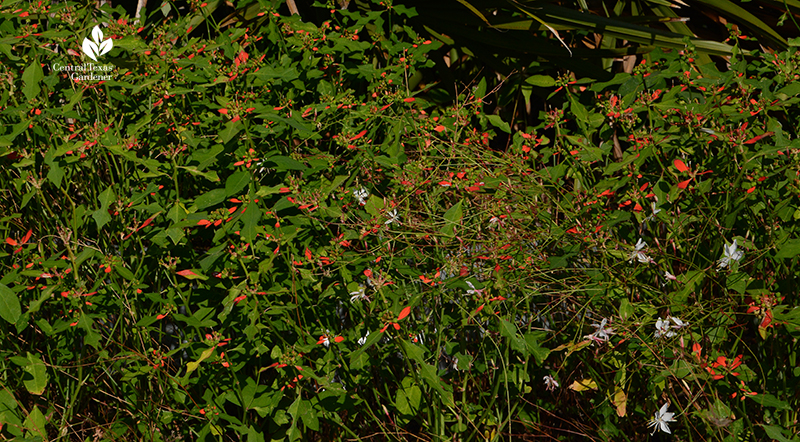
Extremely drought tolerant, it isn’t picky about soil type, growing in heavy clay to rocky limestone. “Although they are listed for full sun, I’ve found that they’re pretty happy in bright, filtered light,” Daphne reported.
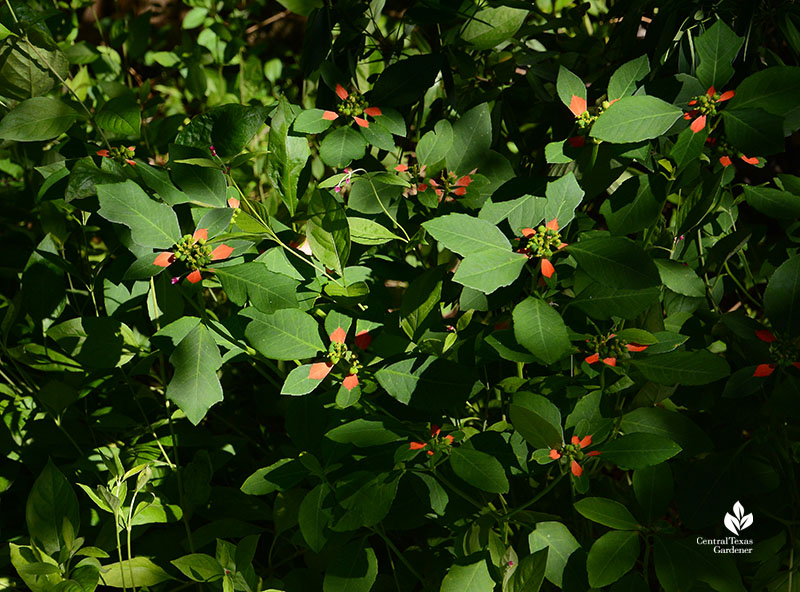
In San Antonio, gardener and Rock Oak Deer blogger Shirley Fox told me, “It’s a prolific annual self-seeder that typically dies off at the first freeze and then reliably returns from seeds in late spring.” After February’s freeze blitz, she added: “I have seen more of them this year than last with new ones still popping up in our milder November weather. Either our rainy spring or possibly the freeze caused a higher germination rate. I don’t have much success collecting seeds since they are tiny and quick to drop. The birds or wind do a good job of distribution and I find them yards away from their original location. Fortunately, seedlings are easily transferred to pots for sharing or transplanting.”
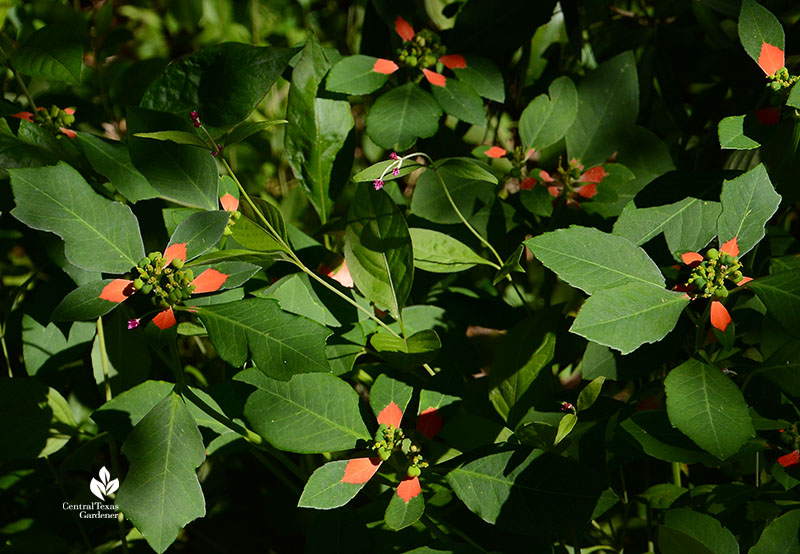
Watch CTG’s story on our visit to Shirley and Neal’s lovely, waterwise San Antonio garden.
Thanks for stopping by! Linda
tags:

